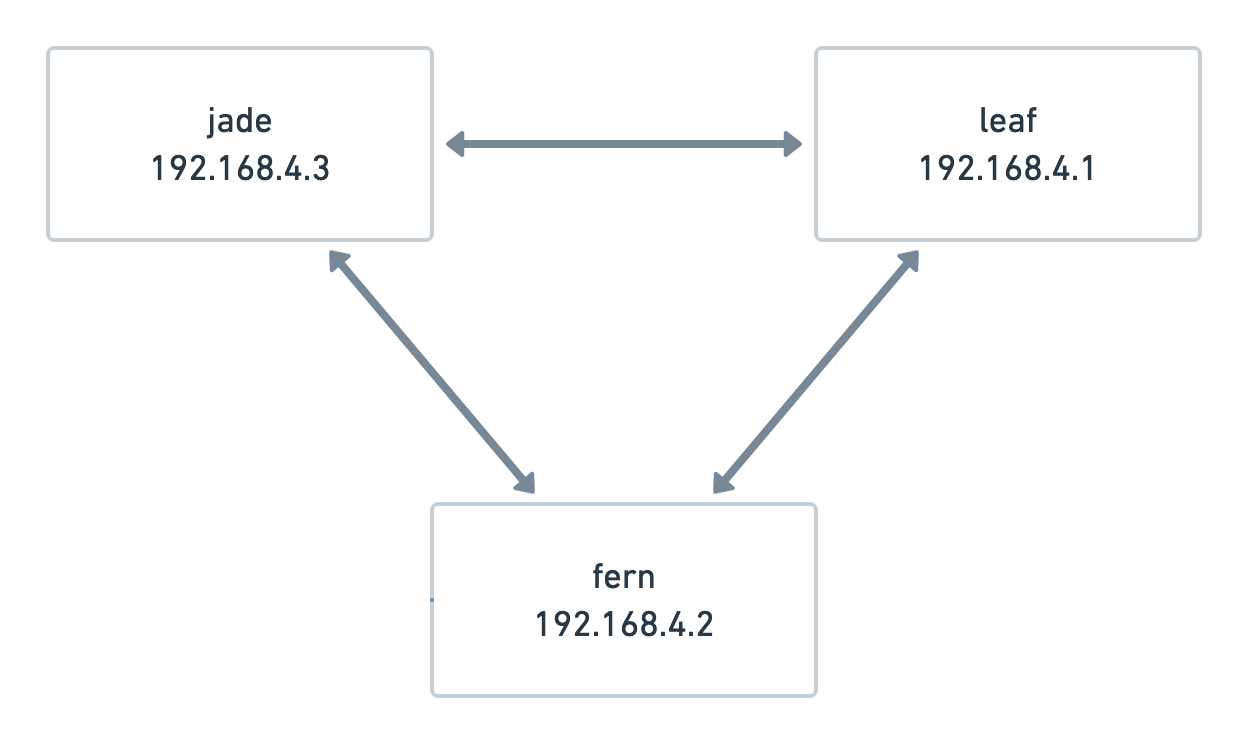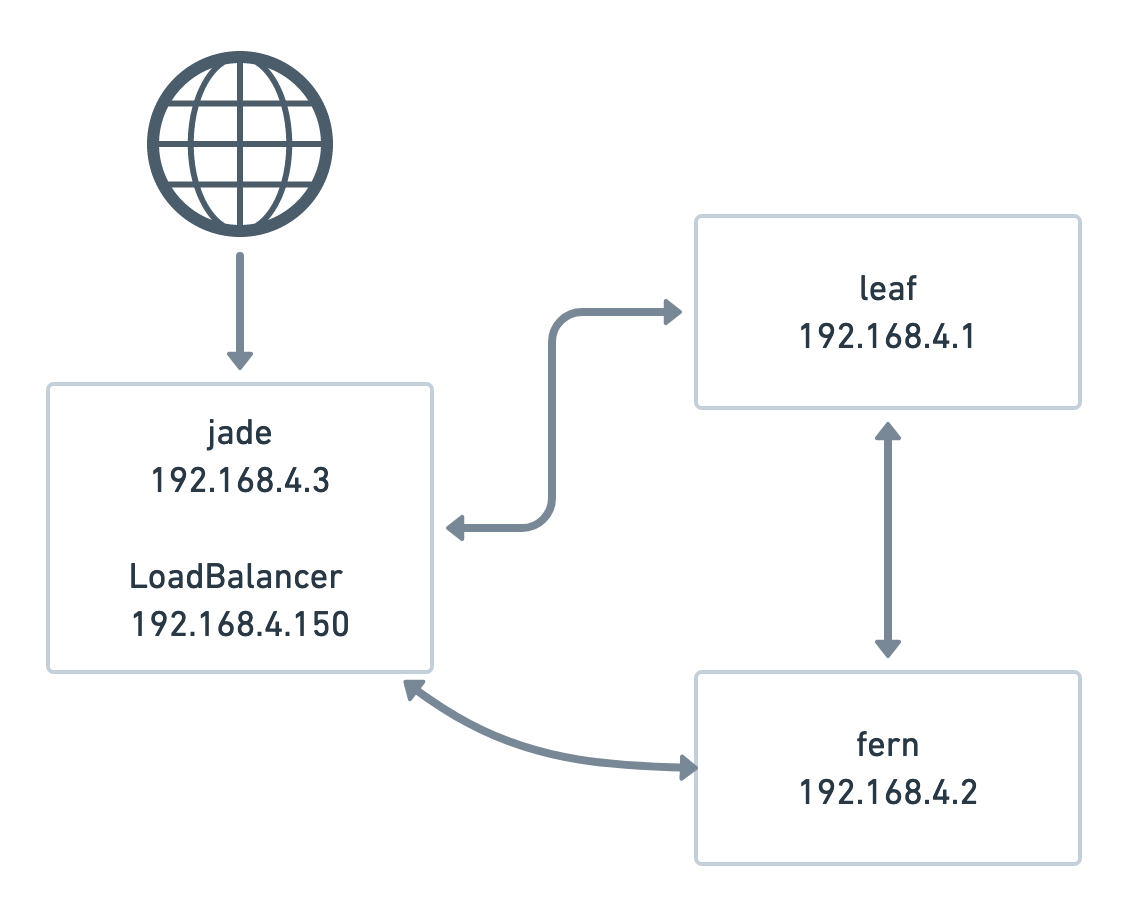Setting up a multi-arch Kubernetes cluster at home
My self-hosted infra, given the cloud native™ treatment
Update 2021–07–11: It was fun while it lasted. I took down the
cluster today and probably won’t go back to using it. It was way too
much maintenance, and Kubernetes really struggles with just 1GB of RAM
on a node. Constant outages, volumes getting corrupted (had to fsck),
etc. Not worth the headache.
I still remember my Lobste.rs comment, mocking some guy for running Kubernetes for his static blog—it is my highest voted comment after all. But to be fair, I’m not running mine for a static blog. In fact, I’m not even hosting my blog on the cluster; but I digress. Why did I do this anyway? Simply put: I was bored. I had a 4 day weekend at work and with nothing better to do to other than play Valorant, and risk losing my hard earned Bronze 2—I decided to setup a K8s cluster. These are the nodes in use:
fern: Raspberry Pi 4B (armhf, 4GB, 4 cores)jade: Oracle VM (amd64, 1GB, 1 core)leaf: Oracle VM (amd64, 1GB, 1 core)
The Oracle machines are the free tier ones. It’s great—two static public IPs, 50 gigs of boot volume storage on each + up to 100 gigs of block volume storage. All for free.1 Great for messing around.
Since my RPi is behind a CG-NAT, I’m running a Wireguard mesh that looks something like this:

Wireguard is fairly trivial to set up, and there are tons of guides online, so I’ll skip that bit.
setting up the cluster
I went with plain containerd as the CRI. Built v1.5.7 from source on all nodes.
I considered running K3s, because it’s supposedly “lightweight”. Except
it’s not really vanilla Kubernetes—it’s more of a distribution. It
ships with a bunch of things that I don’t really want to use, like
Traefik as the default ingress controller, etc. I know components can be
disabled, but I couldn’t be arsed. So, kubeadm it is.
kubeadm init --pod-network-cidr=10.244.0.0/16 --apiserver-advertise-address=192.168.4.2
Since I’m going to be using Flannel as the CNI provider, I set the pod network CIDR to Flannel’s default. We also want the Kube API server to listen on the Wireguard interface IP, so specify that as well.
Now, the kubelet needs to be configured to use the Wireguard IP, along
with the correct resolv.conf on Ubuntu hosts (managed by
systemd-resolvd)2. This can be set via the KUBELET_EXTRA_ARGS
environment variable, in /etc/default/kubelet, for each node:
# /etc/default/kubelet
KUBELET_EXTRA_ARGS=--node-ip=192.168.4.X --resolv-conf=/run/systemd/resolve/resolv.conf
Nodes can now be kubeadm joined to the control plane. Next, we setup
the CNI. I went with Flannel because it has multi-arch images, and is
pretty popular. However, we can’t just apply Flannel’s manifest—it
must be configured to use the wg0 interface. Edit kube-flannel.yaml:
...
containers:
- args:
- --ip-masq
- --kube-subnet-mgr
+ - --iface=wg0
...
If everything went well, your nodes should now show as Ready. If not,
well … have fun figuring out why. Hint: it’s almost always networking.
Make sure to un-taint your control plane so pods can be scheduled on it:
kubectl taint nodes --all node-role.kubernetes.io/master-
Finally, set the --leader-elect flag to false in your control
plane’s
/etc/kubernetes/manifests/kube-{controller-manager,scheduler}.yaml.
Since these are not replicated, leader election is not required. Else,
they attempt a leader election, and for whatever reason—fail.
Horribly.3
getting the infrastructure in place
The cluster is up, but we need to set up the core components—ingress controller, storage, load balancer, provisioning certificates, container registry, etc.
MetalLB
The LoadBalancer service type in Kubernetes will not work in a bare
metal environment—it actually calls out to the respective cloud
provider’s proprietary APIs to provision a load balancer.
MetalLB solves this by well, providing
an LB implementation that works on bare metal.
In essence, it makes one of your nodes attract all the traffic,
assigning each LoadBalancer service an IP from a configured address
pool (not your node IP). In my case:

However, this assumes that our load balancer node has a public IP. Well it does, but we’re still within our Wireguard network. To actually expose the load balancer, I’m running Nginx. This configuration allows for non-terminating SSL passthrough back to our actual ingress (up next), and forwarding any other arbitrary port.
stream {
upstream ingress443 {
server 192.168.4.150:443;
}
upstream ingress80 {
server 192.168.4.150:80;
}
server {
listen 443;
proxy_pass ingress443;
proxy_next_upstream on;
}
server {
listen 80;
proxy_pass ingress80;
proxy_next_upstream on;
}
}
DNS can now be configured to point to this node’s actual public IP, and Nginx will forward traffic back to our load balancer.
Nginx Ingress Controller
Once MeltalLB is setup, ingress-nginx can be deployed. Nothing of note
here; follow their docs.
Each ingress you define will be exposed on the same LoadBalancer IP.
Longhorn
Storage on bare metal is always a pain in the wrong place. Longhorn is
pretty refreshing, as it literally just works. Point it to your block
volumes, setup a StorageClass, and just like that—automagic PV/C
provisioning. Adding block volumes can be done via the UI, accessed by
portforwarding the service:
kubectl portforward service/longhorn-frontend -n longhorn-system 8080:80
There’s just one catch—at least, in my case. They don’t have armhf images, so all their resources need:
nodeSelector: kubernetes.io/arch=amd64
Consequently, all pods using a PVC can only run on non-armhf nodes. This is a bummer, but I plan to switch the RPi over to a 64-bit OS eventually. This cluster only just got stable-ish—I’m not about to yank the control plane now.
cert-manager
Automatic certificate provisioning. Nothing fancy here. Follow their docs.
application workloads
We did all of that, for these special snowflakes. I’m currently running:
- radicale: CalDAV/CarDAV server
- registry: Container registry
- yarr: RSS reader
- fsrv: File host service
- znc: IRC bouncer
I’m in the process of moving Pleroma and lms to the cluster. I’m still figuring out cgit.
closing notes
That was a lot! While it’s fun, it certainly feels like a house of cards, especially given that I’m running this on very low resource machines. There’s about 500 MB of RAM free on the Oracle boxes, and about 2.5 GB on the Pi.
All things said, it’s not terribly hard to run a multi-arch cluster, especially if you’re running arm64 + amd64. Most common tools have multi-arch images now. It’s just somewhat annoying in my case—pods using using a PVC can’t run on my Pi.
Note that I glossed over a bunch of issues that I faced: broken cluster
DNS, broken pod networking, figuring out how to expose the load
balancer, etc. Countless hours (after the 4 days off) had to be spent
solving these. If I had a penny for every time I ran kubeadm reset,
I’d be Elon Musk.
Whether this cluster is sustainable or not, is to be seen. However, it is quite nice to have your entire infrastructure configured in a single place: https://github.com/icyphox/infra
~/code/infra
▲ k get nodes
NAME STATUS ROLES AGE VERSION
fern Ready control-plane,master 7d11h v1.21.1
jade Ready <none> 7d11h v1.21.1
leaf Ready <none> 7d11h v1.21.1
- No, this is not an advertisement. ↩︎
- I hate systemd with such passion. ↩︎
- https://toot.icyphox.sh/notice/A8NOeVqMBsgu5DWLZ2 ↩︎